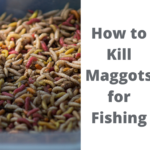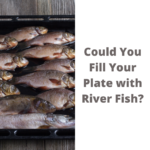Beginners Guides
Freshwater Float Fishing: The Tackle You Need
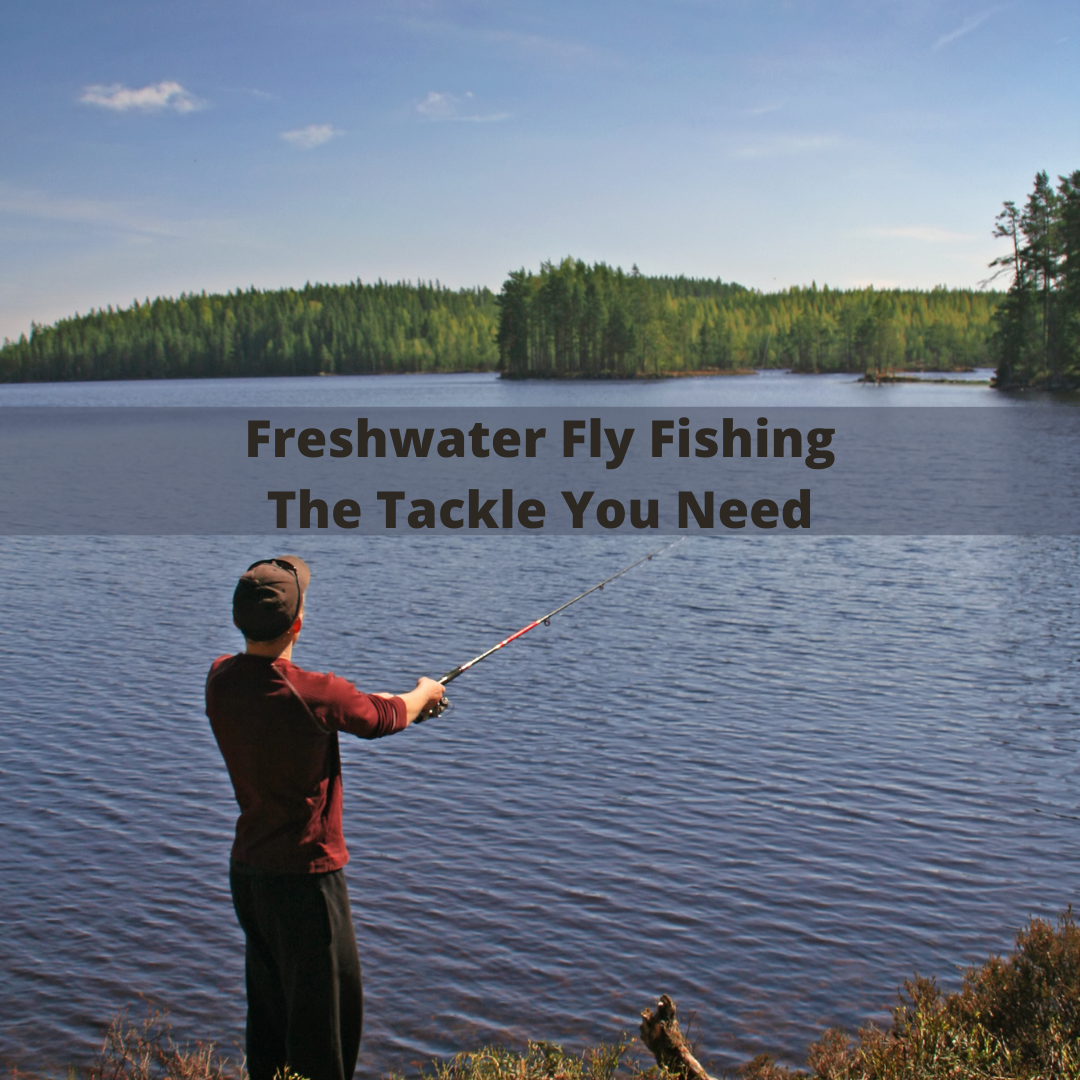
For those passionate about coarse fishing in freshwater, it’s crucial to have the right tackle for a fruitful experience. Float fishing is a top choice among anglers for capturing these species, and with the right equipment, you too can enjoy success. If you’re wondering where to start, don’t worry – we’re here to help! In this article, we’ll explore the vital equipment necessary for an effective water float fishing session aimed at coarse fish.
Coarse fishing is a hugely popular pastime in the UK, with millions of people enjoying it every year. If you’re thinking of giving it a try, then float fishing is a great option. Float fishing allows you to fish for a variety of coarse fish, including carp, bream, and tench.
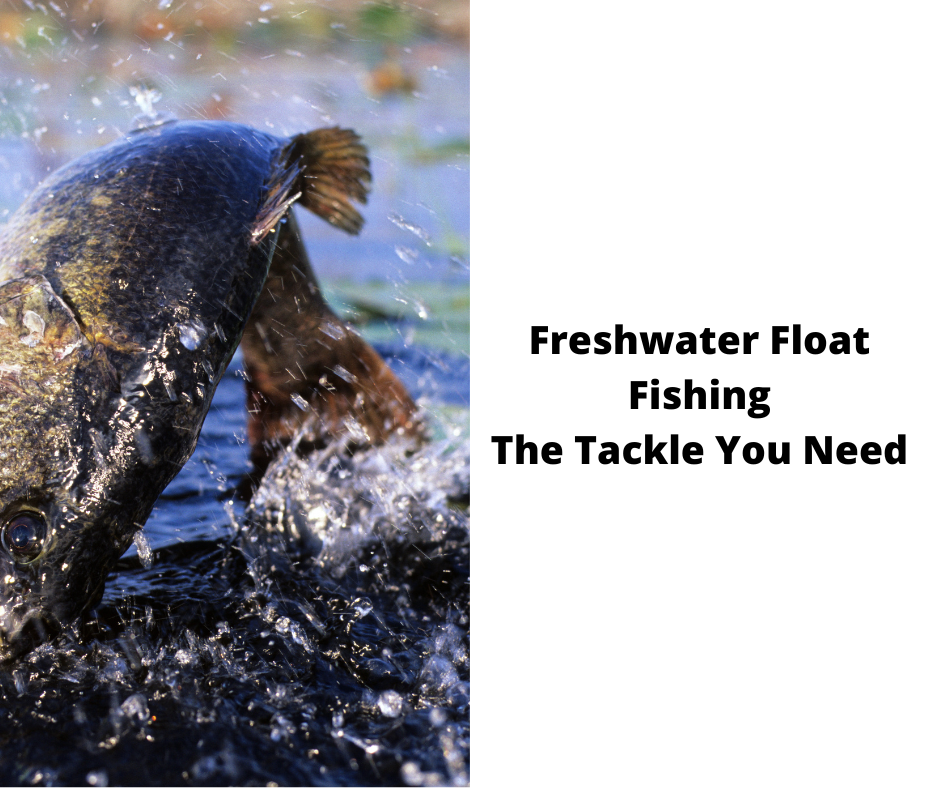
The Tackle You Need
In order to float fish effectively, you’ll need some basic equipment. Firstly, you’ll need a rod and reel. The type of rod and reel you’ll need will depend on the type of fish you’re hoping to catch.
Once you’ve got your rod and reel sorted, you’ll need to choose the right line. Again, the type of line you’ll need will depend on the size and species of fish you’re targeting.
Finally, you’ll need some bait. The type of bait you’ll need will depend on the fish you’re hoping to catch. Once you’ve got all of your equipment sorted, it’s time to start fishing! Float fishing is a great way to enjoy the outdoors and hopefully catch yourself a few fish along the way.
Fishing Rod to Go Freshwater Coarse Fishing
A fishing rod is a long, flexible rod used to catch fish. The earliest known fishing rods are carbonized wood that was found in a tomb in Egypt that dates back to approximately 2000 BC.
Fishing rods come in a variety of sizes and styles, depending on the type of fishing being done. For example, someone who is fly fishing will use a different type of rod than someone who is trolling for fish.
In general, though, all fishing rods have three parts: the butt, the middle, and the tip. The butt is the end of the rod that is placed against the body when casting. The middle is, well, the middle of the rod, and the tip is the end of the rod that holds the line and bait.
Fishing rods are traditionally made from materials such as bamboo, fiberglass, or graphite, but more recently, rods have been made from carbon fiber and other composite materials. No matter what material it’s made from, a good fishing rod should be strong yet flexible, so that it can handle both the weight of the fish and the force of the cast.
Fishing Line to Go Freshwater Coarse Fishing
A fishing line is an important piece of equipment for any fisherman. There are many different types of fishing lines available on the market, each with its own advantages and disadvantages. It is important to choose the right type of fishing line for the type of fish you are trying to catch.
For example, a thicker line is necessary for catching larger fish, while a thinner line is better for smaller fish. In addition, the type of fishing reel you use can also affect the type of fishing line you need. Some reels are designed for use with specific types of lines, so it is important to consult your reel’s manufacturer’s instructions before purchase. With so many factors to consider, choosing the right fishing line can be a daunting task.
However, taking the time to select the right line for your needs will help ensure a successful and enjoyable fishing experience.
Fishing Reel to Go Freshwater Coarse Fishing
Fishing is a great way to relax and enjoy the outdoors, and with the right reel, it can be a very rewarding experience.
For freshwater coarse fishing, you will need a fixed spool reel. This type of reel is designed for heavier lines and bigger fish, and it will help you to land your catch more easily.
Fixed spool reels are also less likely to tangle than other types of reels, so you can focus on enjoying your time on the water. When choosing a fixed spool reel, be sure to consider the size of the fish you hope to catch, as well as the type of line you will be using. With the right reel, you can enjoy a successful day of fishing and bring home a healthy meal for your family.
Floats to Go Freshwater Coarse Fishing
There are different designs of float to choose from but they are really cheap. This means that you could try out a few different ones to see which you find the best. You may lose one or two as well, so it is good to have a selection of them just in case.
The most popular design is the Carp 24, which has a slim body and is very sensitive. Another option is the Matchstick, which is larger and more buoyant. There are also specialist floats for fishing in strong currents or deep water. Ultimately, it is up to you to decide which float is best for your needs.
Hooks to Go Freshwater Coarse Fishing
Hooks are relatively cheap, so you can experiment with different types until you find one that suits your needs. Barbless hooks are usually kinder to the fish, and a size 14 should be about right.
However, it’s always worth doing a bit of research and asking in the shop you go to before making a purchase. With the right hook, you’ll be well on your way to enjoying this great hobby.
Disgorger to Go Freshwater Coarse Fishing
When you go freshwater coarse fishing, there are a few items that you will need in order to have a successful day. One of the most important things is a disgorger.
This is a small tool that is used to remove the hook from the fish’s mouth. It is very important to use a disgorger because it is the humane way to remove the hook. The fish will not be damaged and it will be able to swim away unharmed.
Another important item to bring with you is an unhooking mat. This mat will protect the fish from being damaged when you remove the hook. It is also a good idea to bring a net so that you can safely catch the fish. Without these items, you will not be able to properly take care of the fish and they may be injured.
Landing Net and Pole to Go Freshwater Coarse Fishing
A landing net is an essential piece of kit for anyone who wants to go freshwater coarse fishing. It helps to protect the fish from injury as it is being removed from the water, and it also makes sure that the fish is properly supported so that it does not flop around and hurt itself.
A good landing net will have a soft mesh that will cradle the fish gently, and it will also have a strong frame that can support the weight of the fish. A landing net is usually attached to a pole, which allows the angler to reach out and safely collect the fish.
Looking for a top- quality landing net that won't let you down? Check out the SF Fly Fishing Landing Net. This net is perfect for fly fishing, thanks to its soft rubber mesh which is gentle on fish. It also features a solid and sturdy wooden frame, making it durable enough to withstand any fishing conditions. Plus, the extendable spring-cord means you can use it in a variety of different situations. Best of all, the powerful magnets make sure your catch stays put. So don't wait any longer, get the SF Fly Fishing Landing Net today!
The pole also provides some support for the net so that it does not sag under the weight of the fish. Landing nets come in a variety of sizes, so it is important to choose one that is appropriate for the type of fish that you are likely to catch. Smaller nets are fine for smaller fish, but if you are expecting to catch larger fish then you will need a larger net.
Landing nets can be made from a variety of materials, but nylon is often used because it is strong yet lightweight. When choosing a landing net, make sure that you pick one that is durable and fit for its purpose.
Seat Box or Chair to Go Freshwater Coarse Fishing
When it comes to freshwater coarse fishing, one of the most important things you’ll need is a comfortable place to sit. After all, you could be fishing for quite a while.
Some people opt for a simple chair, but a seat box can often be a better choice. Not only can you store items inside of it, but you can also pack things away for easy transport to and from your fishing spot. Plus, you may not need a separate tackle box if you have a seat box with plenty of compartments.
It’s worth taking the time to compare your options and decide which one will offer the best value for your needs.
Bait to Go Freshwater Coarse Fishing
There is a lot to consider when it comes to bait for freshwater coarse fishing. Maggots are a good option for those on a budget, but there are many other options available as well.
It is important to choose the right bait for the fish you are hoping to catch, as well as take into account the water conditions and other factors. Once you have decided on the perfect bait, you will need to store it properly until you are ready to use it.
A simple plastic tub with holes punched in the lid will suffice, but it is important to make sure that the holes are small enough to prevent the bait from escaping. With the right bait and proper storage, you will be ready for a fun day of fishing.
Conclusion
Coarse fishing is a popular pastime in the United Kingdom, and there are many different ways to fish for coarse fish. One of the most commonly used methods is float fishing, which involves attaching a float to the line and bait so that the bait is suspended just above the bottom of the water.
This method is effective for a variety of different coarse fish, including bream, carp, and tench. Another common method is feeder fishing, which involves using a feeder to release bait into the water at regular intervals. This method is often used when fishing for species such as barbel and chub. In addition to these two methods, there are also a variety of specialized techniques that can be used to target specific species of coarse fish. No matter what method you use, coarse fishing can be a fun and rewarding experience.
When it comes to freshwater coarse fishing, one of the most important things you’ll need is a comfortable place to sit. A seat box or chair can often be a better choice than a simple chair, as it offers more storage and transport options. Plus, you may not need a separate tackle box if you have a seat box with plenty of compartments.
Bait is another important consideration when fishing for coarse fish. It is important to choose the right bait for the fish you are hoping to catch, as well as take into account the water conditions and other factors.
Once you have decided on the perfect bait, you will need to store it properly until you are ready to use it. A simple plastic tub with holes punched in the lid will suffice, but it is important to make sure that the holes are small enough to prevent the bait from escaping.
Phil loves fishing. He started fishing with his grandpa behind the house in the early morning when he was a kid. Phil is now the Editor-in-Chief of Fishing Eureka, and he still enjoys getting up before dawn to wet a line. There’s nothing like the peace and quiet of being out on the water at sunrise, and Phil always takes advantage of every opportunity he gets to spend time fishing.
Beginners Guides
What is Magnet Fishing?
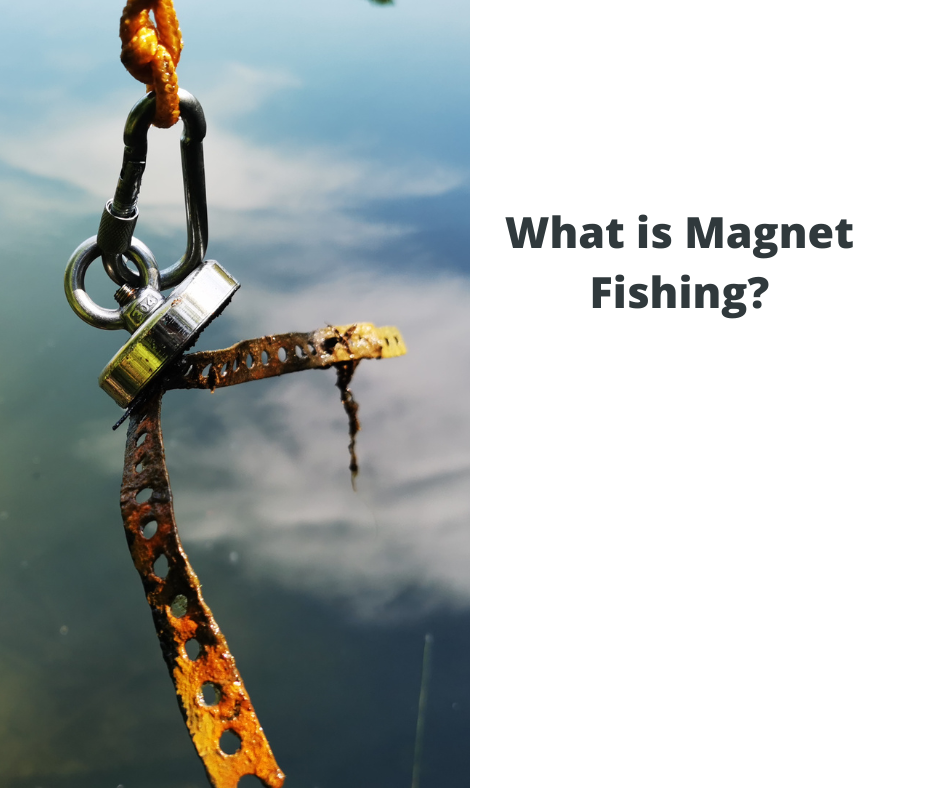
Interested in magnet fishing? You’ve found the right place. It’s a fun hobby that not only entertains but also aids in cleaning our aquatic environments, plus there’s the potential to make a little money! Keep reading to discover more. This activity is increasingly becoming popular among hobbyist fishers. It’s earning acclaim for its positive impacts, and you can join in as well! In this article, we discuss the basics of magnet fishing and offer tips on how to get started.
What Is Magne Fishing? – It’s a Fun Hobby
Magnet fishing is a popular hobby in the UK, but there are certain precautions you should take. While it is not explicitly illegal, magnet fishing can be dangerous, especially when handling heavy objects. Always use due care when handling items. In some areas, it is unlawful to magnetize things. If you find a grenade, unexploded bomb, or live ammunition in the water, you should call the police and report the find.
If you aren’t sure if you can find metal, try looking in old waterways or riverbeds. If you’re lucky, you might find a piece of jewelry or a vintage bike, but you’ll likely have to settle for something else if you’re not lucky. Using a magnet will help you distinguish metal objects from a piece of jewelry or another object.
It’s a Way to Clean up Waterways
You’ve heard about magnet fishing, but what exactly is it? Well, it’s a fun and creative way to clean up waterways without getting wet! With its magnetic properties, you can find various objects that stick to metal. Generally, these objects are manufactured, but rocks containing iron ore may also adhere to a magnet. What you find will depend on where you’re fishing. For example, you might find lug nuts if you’re fishing near a busy road or railroad bridge. But whatever you find, remember that the point of magnet fishing is to help clean up the waterways and spend time on the water.

In addition to trash, magnet fishing has many benefits. Most waterways contain metal and other trash, and the activity helps clean up these waterways. But magnet fishing also poses some dangers, and authorities have warned that this activity could be dangerous. Some channels have relics of war. As such, it is essential to dispose of these items properly. It is important to remember to wear gloves when you’re cleaning up.
It’s a Way to Connect with Nature
Magnet fishing is a new hobby that can be a great way to get in touch with nature. This sport is not only exciting, but it can also help to clean up waterways and contribute to the cleanup of the environment. Many magnet fishermen say that they enjoy the challenge of finding a new catch each time, and they can even see the difference their efforts are making in the environment. But before you get started, here are some tips and ideas.
First, knowing how to safely and effectively fish for magnets is essential. Most fishermen are very handy and can learn new hobbies. Secondly, the metals they find can be used to make a new bike, so you can reuse them again. Lastly, magnets are helpful for many other things, so if you find a metal object, do not throw it away. Whether it’s an old bike or a car, you can use it to create a new piece of jewelry or a new bicycle.
It’s a Way to Make a Small Profit
If you have a passion for magnet fishing, you can sell some of your finds online and make a few bucks. There are many YouTube videos; you can display ads to generate revenue if you make them yourself. You can also sign up for an affiliate program such as Amazon to earn money when someone purchases through your link. You can create a YouTube video in a matter of minutes and make some extra money.
You can make money from magnet fishing by selling scrap metal and other valuable items. People use keywords to find their favorite channels on YouTube, so you should include keywords in your video description. It may take a little time to build up a following and traffic, but once you have an established channel, you can begin earning. YouTube will pay $4 per thousand views. However, you may not make as much as you would with a traditional job or hobby.
Beginners Guides
How to Tie Two Fishing Lines Together
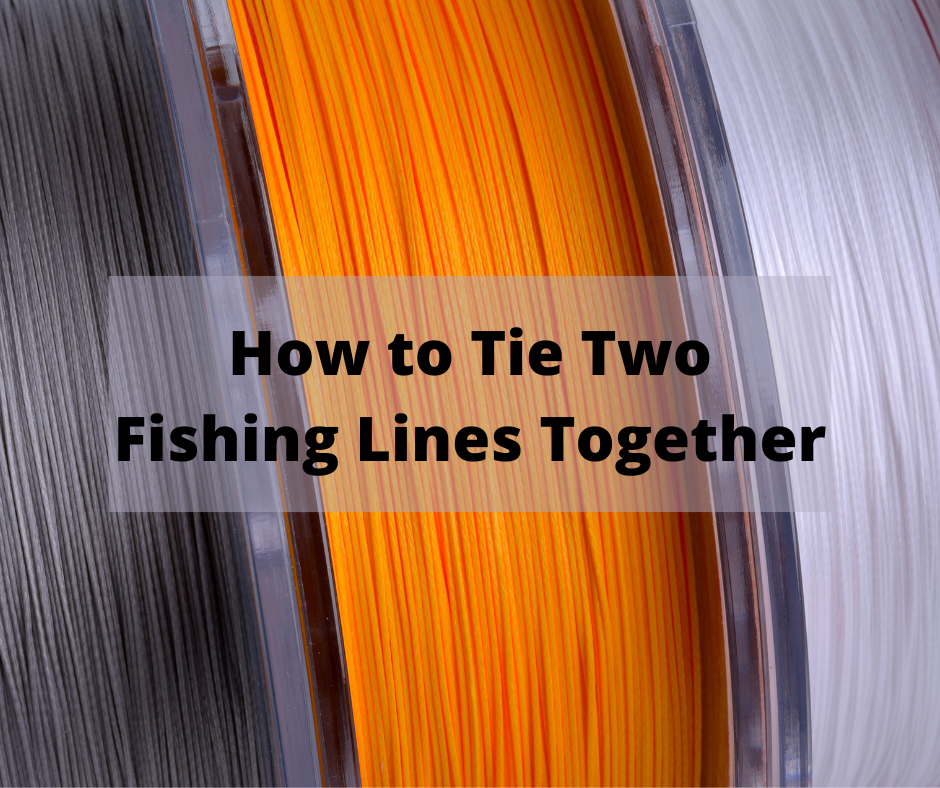
If you’re a beginner in the world of fishing and wondering about the most effective method to tie two fishing lines together, here are a few tips on how to do it successfully:
Albright Knot
The Albright knot is a simple method for tying two fishing lines together. It is also called the Albright Special and was invented by Captain Jimmy Albright in Islamorada, Florida. The Albright knot is also a staple of the Ultimate Fishing Knot Guide. It is a simple yet effective method for tying two fishing lines together. It should be wrapped neatly around the other cord to make the knot stronger.
Make sure the loops of the two fishing lines sit next to each other. If the fishing lines are thin, ten loops are sufficient. For thicker cordage, however, 15 or 20 loops are recommended.
Double Overhand Knot
The double overhand knot is the most popular type of fishing knot, and it can be used to tie two lines together. To tie a double overhand knot, you must first make a loop in one end of your main line, and then fold the second end of the loop into the first loop. Pass the second end through the first loop twice, then make another loop at the other end of the main line.
Palomar Knot
If you’re looking for the best way to tie two fishing lines together, the Palomar knot is one of the best. This knot will hold up to a hundred percent of the fishing line’s strength when tied properly. It has been tested for monofilament, fluorocarbon, and braided lines. The International Game Fish Association (IGFA) has also tested its strength. The knot was invented by Chet Palomar, a researcher for Dupont who recommended the Palomar knot to fishermen for jigheads, hooks, lures, and terminal tackle.
Blood Knot
A Blood knot is a traditional fishing knot, used by anglers to tie two fishing lines together. The knot is designed to join similar-diameter monofilament nylon or fluorocarbon lines while maintaining a high degree of strength. Other knots can be used for this purpose, but they tend to loosen the line’s power, making it more likely to break. A blood knot is one of the best knots for this purpose.
You’ll need about 12 inches of line to tie a blood knot. Begin by overlapping the two lines at the center, then make five wraps around both lines. Next, thread the end of one line through the wraps, and pull tight. Do the same with the other line, then trim the excess cord. Finally, moisten the knot and pull on both lines to snug it up.

Improved Clinch Knot
If you are looking for an effective way to tie two fishing lines together, consider using the improved clinch knot. This knot is widely used to secure your fishing line to your lure, hook, or swivel. The improved clinch knot adds an extra tuck under the final turn and is helpful in fastening your leader to your fly. It is difficult to tie in heavier lines, so it is not recommended for those types of line. Ideally, you should tie the knot four or five times. You can also tie it more securely with four or five turns.
To tie an improved clinch knot, start by threading your line through the eye of the hook. Then, make five wraps around the standing line, and thread the end of the line through the first loop you made. Next, moisten the knot and pull on both lines to tighten it. You can also add an extra tuck for added security.
San Diego Knot
The San Diego knot is a great way to tie two fishing lines together. This knot is simple to tie and very strong. Anglers often use it to connect their mainline to their leader. The San Diego knot is also helpful in connecting your fly line to your backing. To tie this knot, start by doubling your mainline and making a loop. Then, make five wraps around the loop with your doubled line, and thread the end of the line through the first loop you made. Next, moisten the knot and pull on both lines to tighten it.
Wrapped Double Overhand Knot
The wrapped double overhand knot is a great way to tie two fishing lines together. This knot is similar to the double overhand knot, but it has an extra wrap around the main line. This extra wrap adds more security and makes the knot stronger. To tie this knot, start by making a loop in one end of your main line. Then, fold the second end of the loop into the first loop and pass it through twice. Next, make another loop at the other end of the main line and pass the second end of the line through the loop twice. Finally, moisten the knot and pull on both lines to tighten it.

Double Fisherman’s Knot
The double fisherman’s knot is a great way to tie two fishing lines together. This knot is similar to the regular fisherman’s knot, but it has an extra wrap around the main line. This extra wrap adds more security and makes the knot stronger.

To tie this knot, start by making a loop in one end of your main line. Then, make five wraps around the standing line and thread the end of the line through the first loop you made. Next, make another loop at the other end of the main line and thread the second end of the line through the loop five times. Finally, moisten the knot and pull on both lines to tighten it.
Surgeon’s Knot

The surgeon’s knot is a great way to tie two fishing lines together. This knot is simple to tie and very strong. Anglers often use it to connect their mainline to their leader. The surgeon’s knot is also helpful in connecting your fly line to your backing.
To tie this knot, start by threading your line through the eye of the hook. Then, make five wraps around the standing line and thread the end of the line through the first loop you made. Next, moisten the knot and pull on both lines to tighten it. You can also add an extra tuck for added security.
FG Knot
If you are new to tying knots, you may wonder how to tie two fishing lines together. Here is a simple way to do it. First, take one end of each fishing line and loop it around the other end. Then, pull the end of the second line snugly into the loop. Once you have the two lines knotted together, you can release the knot. Then, you can begin the braiding process.
To braid the lines together, start by holding one end of each line in each hand. Then, cross the lines in the middle and tuck one end under the other. Next, take the top line in your right hand and put it over the middle line. Now take the bottom line in your left hand and put it over the new top line. Finally, take the top line in your right hand and put it over the new bottom line. You have now completed one braid. Repeat this process until you have braided the lines together for a few inches. Then, you can tie off the ends with a knot or use a clasp to secure the braid.
Conclusion
There are several different knots that can be used to tie two fishing lines together. The Double Fisherman’s Knot, the Surgeon’s Knot, and the FG knot are all simple and effective ways to do this. If you are new to tying knots, the FG knot may be the best one for you to start with. It is easy to learn and very strong. Once you have mastered the FG knot, you can try some of the other knots listed here. Which knot do you think will work best for your needs?
Beginners Guides
How to Tie a Fishing Knot
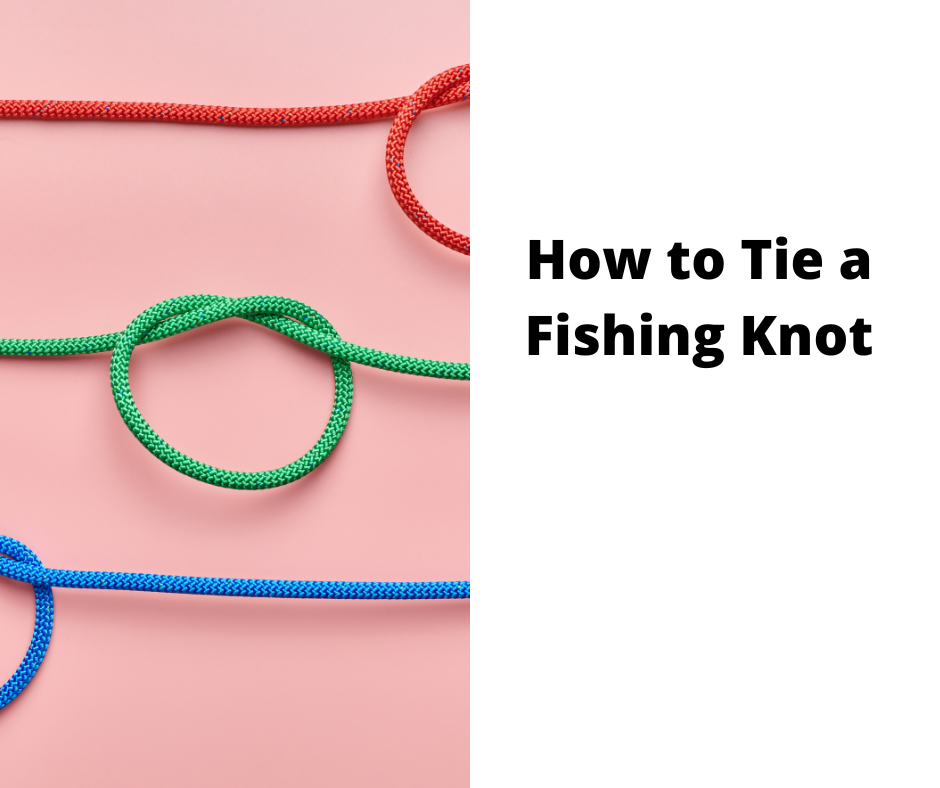
Fishing Knot Tying Tutorial – Trying to fish from a boat but unsure about how to tie knots? You’ve stumbled upon the ideal guide. This tutorial will walk you through how to tie the snell knot, improved clinch knot, haywire twist, and Berkley braid knots. Mastering these knots is crucial for securing your line to the fish. Follow these instructions, and you’ll become proficient at knot tying for your next fishing trip.
Snell Knot
A snell fishing knot is a strong yet delicate knot often used to attach hooks to the line. It can be used to attach circle hooks to leader lines. It can also be tied with a Uni Snell knot to secure live baits or heavy leaders. A Snell knot can be linked with no glue or thread. Read on to learn how to tie a snell knot.
To tie a snell fishing knot, hold the tag end of your fishing line on the shank of your hook. Wrap the leader line seven to eight times around the hook shank. Pull the string taut until the knot is secure. This step should be repeated as many times as the number of wraps in your fishing line. The remaining cord should be wrapped around the eye of the hook. Once you have tied the knot, pull on your tag end and standing line to tighten the loop.
Improved Clinch Knot
When you tie an improved clinch knot, it’s essential to know the proper technique. This knot should be tied tight with plenty of twists to keep it from undone. The knot will not stay on the fish if your line is too limp. The tag end of the line should be passed through the large loop before tying the knot. After tying the knot, keep the tag end pliable by using a ChapStick.
If you try to tie an improved clinch knot, you’ll want to avoid using a thin, limp braid. The latter is too slippery and will not hold turns well or bite down. Instead, use a thicker braid to tie an improved clinch. Be sure to leave about five or six inches of tag end. You may want to connect two or three loops in your line before tying them together.
Hay Wire Twist
The Haywire Twist is a fishing knot that ties a wire leader to a hook. It is an ideal choice for rigid single-strand wire, but it is unsuitable for flexible wire. A more flexible wire can be wrapped using a standard knot. Begin by passing the wire through the eye of the hook, bend it back, and make a half-circle of the standing part of the wire. Next, twist the tag end of the wire five times around the wire, ensuring that it is at an angle to the standing part. After that, make three barrel coils around the wire.
The Haywire Twist is a standard for tying a loop in the single-strand wire. Use it to create a loop in a leader or twist it directly to the hook or lure. It has become the go-to knot for fishing lines, and a simple pair of pliers will do. This knot is easy to learn and can lead to work-from-home job prospects.
Berkley Braid Knot
The Berkley braid fishing knot is a simple yet effective method for tying your line. This type of fishing knot is similar to the San Diego Jam knot but has several additional features. The Berkley braid knot is secure because it is tied with a double loop. After placing the double loop through the hook, you need to double back parallel to your tag end and existing line. Then, make eight wraps around the standing line. This method leaves a quarter-inch gap in the middle.
You can read the tips below if you want to tie a Berkley braid fishing line. This knot was created especially for braided lines but worked well on monofilament and fluorocarbon fishing lines. It is the winner of the Knot Wars, and it has a few disadvantages. Another good option is the Eugene Bend, also known as the Eugene Slip Knot. It is suitable for fishing monofilament and fluorocarbon lines but can produce a slight pop when drawn tight.
Trilene Knot
The Trilene Knot is a versatile fishing knot that can be tied with braided line and monofilament. The Trilene knot is easy to connect but can be improved. One easy step before cinching down the line is to pass the tag end through the loop created when double-looping the line. Once the tag end is through the eye of the hook, pass it through the remaining loops and tighten. Once tight, trim the tag end.
The Trilene knot is similar to the knot used for monofilament and fluoro. The most significant difference between the two is the smoothness of monofilament compared to fluorocarbon and braid. The knot requires 7-10 wraps around the line. Once tied properly, a Trilene knot will stay tight and not come undone, even when the line is wet or slippery. If you have a few tips in your mind, this knot will serve you well.
Berkley Braid
The Berkley Braid Knot is the strongest braid fishing knot among the most common types of fishing knots. Berkley developed this fishing knot to retain the braided line’s strength without letting it slip out of the knot. This fishing knot can tie hooks, lures, or jigheads to the fishing line. Once the fishing line has been braided, tighten the double loop between the eye and the tag end. Leave about a quarter-inch of the line at the end of the braid.
Before you tie the Berkley Braid Fishing Knot, ensure that your fishing line is strong enough. Otherwise, you’ll run into trouble while trying to tie this knot. The braid tag end should be on one side of the line. Once you’ve made a loop with your braid, take the tag end and wrap it around the line. Make sure to apply the proper pressure to the knot.
Conclusion
The three most common knots for fishing are the Haywire Twist, Berkley Braid Knot, and Trilene knot. The Haywire Twist is a knot that is easy to learn and can be used with single-strand wire. The Berkley Braid Knot is versatile and can be tied with braided line and monofilament. The Trilene Knot is a strong knot that can be tied with a braided line and monofilament.
Phil loves fishing. He started fishing with his grandpa behind the house in the early morning when he was a kid. Phil is now the Editor-in-Chief of Fishing Eureka, and he still enjoys getting up before dawn to wet a line. There’s nothing like the peace and quiet of being out on the water at sunrise, and Phil always takes advantage of every opportunity he gets to spend time fishing.
-
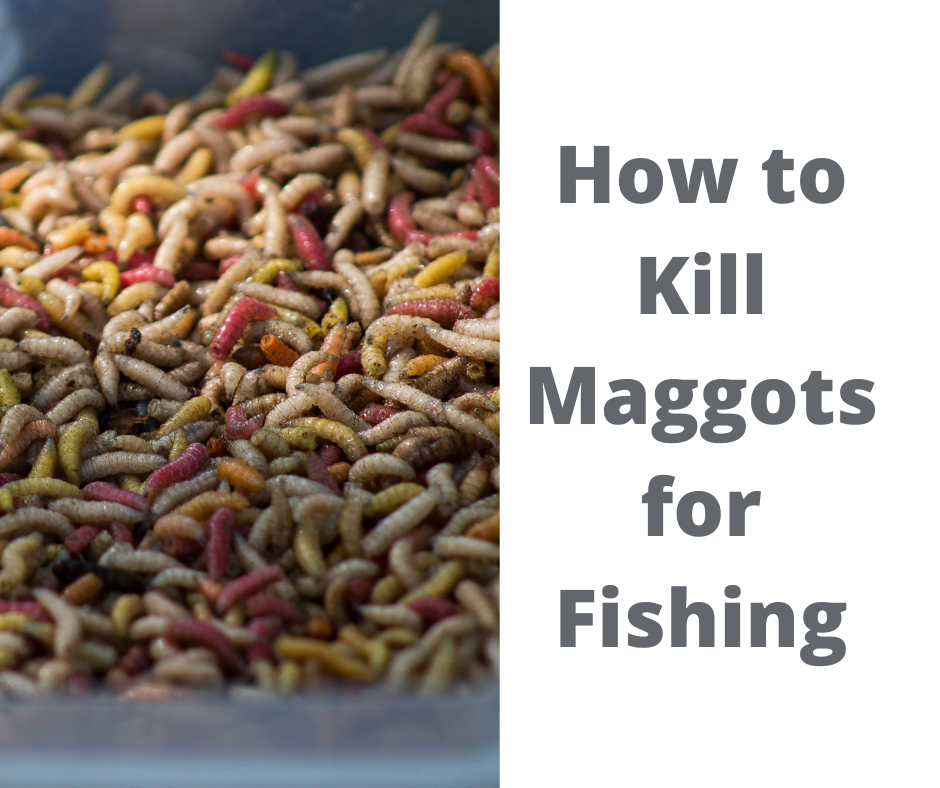
 Beginners Guides4 weeks ago
Beginners Guides4 weeks agoHow to Kill Maggots for Fishing: What’s the Best Way to Kill Maggots?
-

 Beginners Guides4 weeks ago
Beginners Guides4 weeks agoHow to Tie Two Fishing Lines Together
-

 Beginners Guides4 weeks ago
Beginners Guides4 weeks agoWhat is Magnet Fishing?
-

 Cooking4 weeks ago
Cooking4 weeks agoGrilled Yellowfin Tuna Recipe: A Delicious, Nutritious Meal
-

 Carp Fishing1 month ago
Carp Fishing1 month agoBritish Record Bream: 22lb 12oz
-

 Carp Fishing4 weeks ago
Carp Fishing4 weeks agoCircle Hooks, Barbless: The Answer to the Parrot Mouth Carp Problem?
-
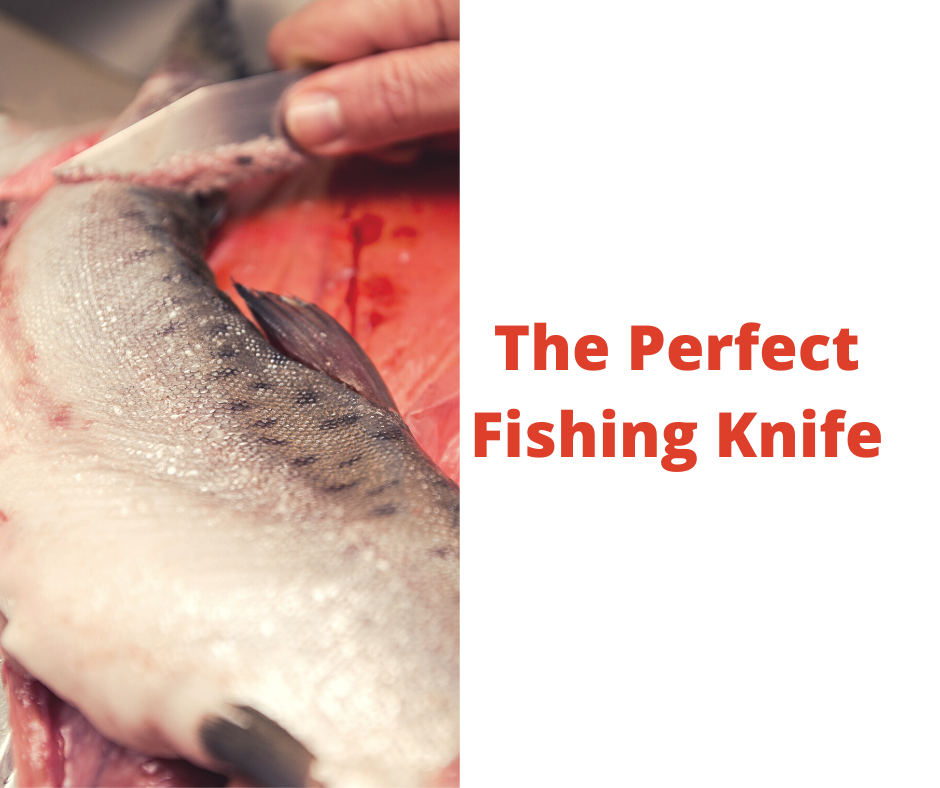
 Beginners Guides4 weeks ago
Beginners Guides4 weeks agoThe Perfect Fishing Knife: What to Look for in an All-in-One Seafood Knife
-
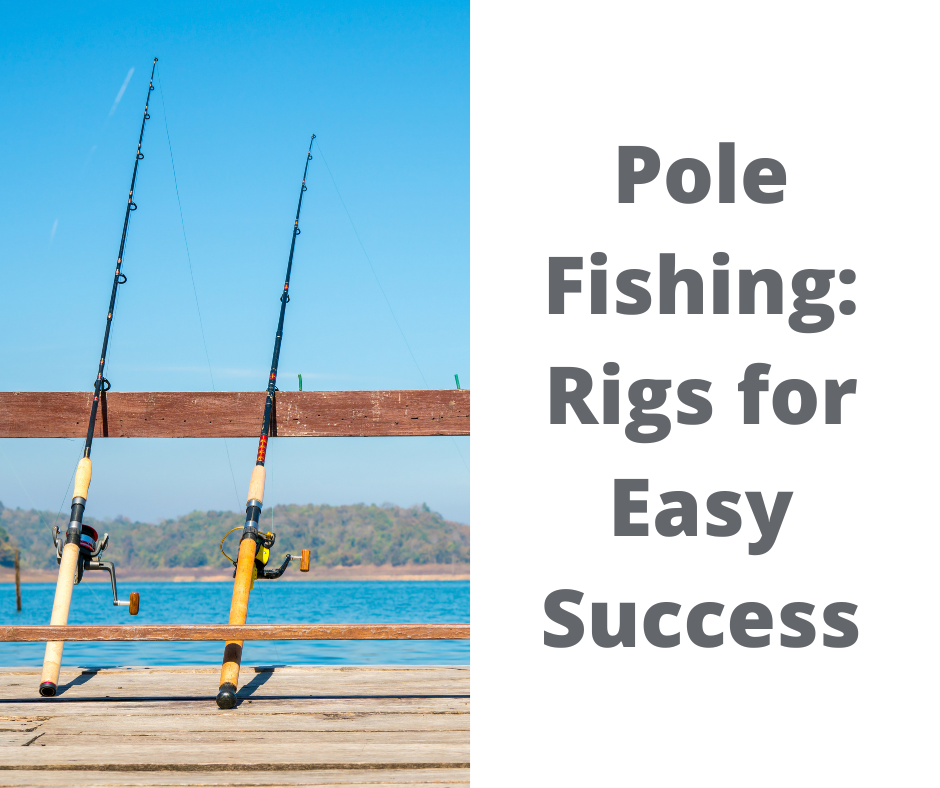
 Pole Fishing1 month ago
Pole Fishing1 month agoPole Fishing: Rigs for Easy Success







